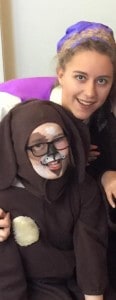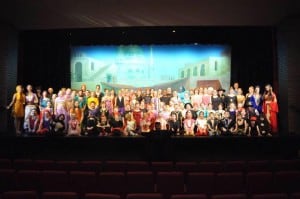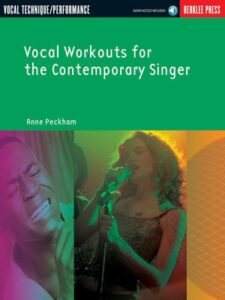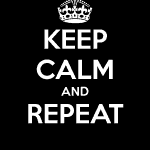Tag Archives: learning song
Why have a singing teacher?
I have been visiting various singing websites lately and have found many of them to have great ideas and ways to help singers.
One thing I have noticed on a couple of the websites is their claim that you don’t need to have face to face lessons to sing well, just watch my videos and you can become the greatest singer. For me this is a one way street.
My comment to this is if you don’t know what you are doing wrong, you can never know what you are doing right.
Feedback is integral to good progress. Feedback is the rocket fuel that propels the acquisition of knowledge and without it, no amount of practice or watching videos is going to get you there.
A singing teacher is not merely there to offer encouragement and assessing levels of concentration, they are also on the lookout for small technical glitches that may have escaped the attention of their student.
You can get the basics from reading material or watching videos, but I would highly recommend you seek out a singing teacher or at least a mentor who can give you appropriate feedback and guide you on your musical journey.

Newsletter 1 2016
Welcome back to another year of singing!
It has been wonderful greeting students for the new year, hearing about their holiday adventures and seeing their joy at returning to lessons.
For the adult students there has been less about holidays ( unfortunately) but there has certainly be the same enthusiasm as they arrive for lessons.
For students who have been studying with me for a while, it has been great to hear their voices again and realize the progress they have been making vocally. It has been so exciting to hear the way their voices have matured and developed. For new students it has been exciting starting with them and helping them uncover the voice they have inside them.
A big welcome to all the new students who have started for 2016. I look forward to working with you on your musical journey!
News from the Studio:
PRACTICE BLITZ!
Students have new repertoire to start working on for 2016.
To get you into a practice routine I am holding a practice blitz for the next two weeks.
The blitz will run from Monday 22nd February until Sunday 6th March . All you need to do is practice consistently and record your practice times on the singing strong website. (remember you have to log into your account to fill in the details. If you need help with this please let me know.) You can log in at the bottom of this post.
There will be prizes and surprises for the person who clocks up the most practice hours!
Take some time now to work out times during the week when you can dedicate 15 -20 minutes to practice. Record this on your calendar and then stick to it!
Student achievements:
Congratulations to all the students who participated in the Summer Pantomime “Aladdin”. It was a fun show and I thoroughly enjoyed myself when I went to see it.

Congratulations to Alicia Hooimeyer who played the title role and to Sophia Patikisa who was a gorgeous Jasmine.
 Hollie Gibson was terrific as the dog and there were other fantastic performances from the following students as well:
Hollie Gibson was terrific as the dog and there were other fantastic performances from the following students as well:
Ella Brent
Zahra Hanratty
Ella Hill
Paige Horn
Maddison Logue
Britney Nelthorpe
Sebastian Poole

There are numerous students involved in the many productions that will be held during 2016. I will keep you informed as they come up.
Cafe Concert
I have tentatively booked our first term Cafe Concert for Wednesday 16th March from 6.30pm. Please put this date in your diary. I understand that some of you will have commitments on this evening, but it would be appreciated if you are able to come and sing, even if you are only able to pop in and out.
I will put out some more information about this event during the week.
So let’s get singing! Have a great week.
Dream!
The power of “Yet”
Music and singing requires accuracy and skill to be the best at your game.
More often than not we fall short of this and usually give up. Too often I hear from my students “I can’t do it, it’s too difficult”.
And they stop. They stop trying, stop persisting and then fail to make progress.
I like to use the words “not yet” all the time.
I have learned from years of experience, that when faced with something difficult it is important to remind ourselves that it will take time to master it.
With our ‘instant’ society we tend to believe that if I don’t get it straight away then it will not happen.
Working with children I sadly see this all the time.
By constantly reminding them that it is ok to have a go and get it wrong, and try again and again if you need to, they start to realize that if they persist eventually they will get it.
If you are studying anything and finding you are getting nowhere, it may be because you have hit a road block and instead of saying not yet have not bothered to look for a way around it and given up.
Tell yourself that “I haven’t learned ________________ yet!” That little word makes such a difference to your end result.
Musical Problem Solving in 10 easy steps
When practicing it is important to have specific things to focus on during practice sessions.
Quite often we go through a song, find challenging sections within the song, struggle through these, get to the end of the song and then go through it again. This doesn’t achieve much as you continue to struggle through these difficult sections.
What you need to do however is to “chunk” the song into parts, and then focus on the parts that are giving you difficulty. Once they are resolved, then go through the whole song.
Below are 10 steps you can follow to help you with your practice:
1. Listen
Listen to the performance of a piece or section of a piece.
2. Diagnose
Where are the problems?
3. Choose
What should I fix first?
4. Isolate
Find the problem “bite” to fix in five minutes
5. Simplify
What can you do to get more comfortable with the problem?
6. Repeat
How many times do I need to repeat this drill to get it right?
7. Connect
Place the corrected “bite” back into the section of music.
8. Generalize
Are there any similar problems in the piece to fix?
9. Retain
What do I need to remember to do in practice to fix this problem?
10. Set Goal
What will you accomplish with this song in the next week?
Congratulations! You are now a successful Problem Solver!











